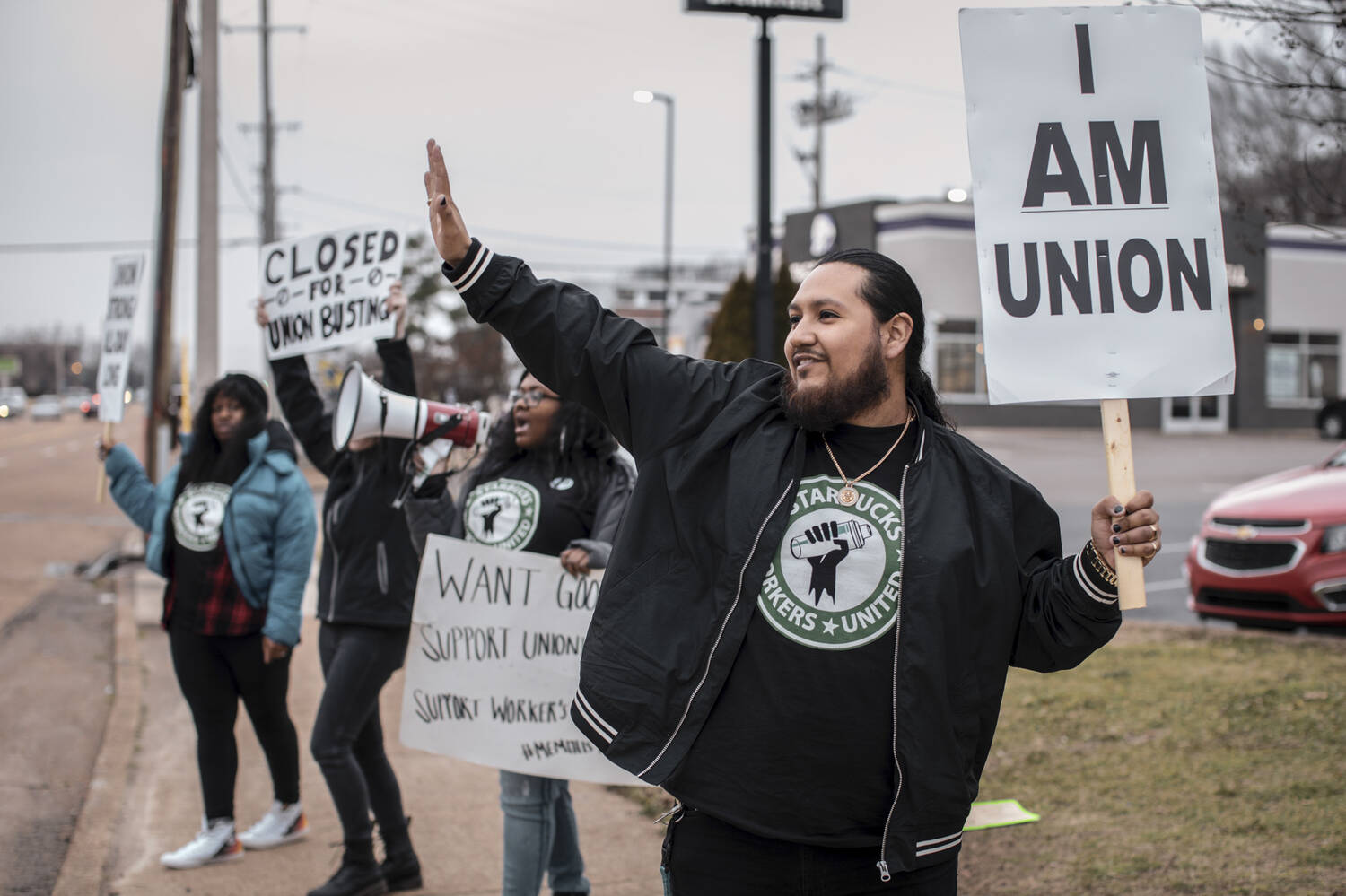The recent rise in unions around the United States has been hitting universities and major companies such as Starbucks and Amazon over the last few years (NPR). What has caused such a trend in unionization? First, let’s take a look at some relevant history regarding unions and the purpose they serve. In the United States, labor unions trace back to as early as the 1700’s. For example, the Federal Society of Journeymen Cordwainers (shoemakers) formed in 1794 in protest due to disadvantages received in their industry from overly greedy factory owners. This union became the precedent for future sustained trade and labor unions that were to form in years thereafter throughout the country. Following this era were the 1800’s, where the world witnessed significant growth due to manufacturing and technological advances. This period was known as the Industrial Revolution which occurred in both Europe and the US. By the end of the 1800’s (19th century) the US became even more powerful with a rise in economic growth due to the Second Industrial Revolution where science and technology rapidly expanded even more so. This created mass production in factories, railroads, and produced necessities such as steel and electronic systems such as telephones.
As a response to the rapid expansion of jobs and employment across the US, the need for unions became more prevalent and were formed to protect the rights of workers and to vouch for employees in relation to wages, employee benefits, working conditions, and to help with disagreements and disputes between employees and management. Who can belong to a union exactly? Typically, any employee can join a union based on their occupation in the public and private sector. That will determine what type of union they are able to join and if they qualify to do so. Employees also must pay membership dues which funds their unions activities. Private sector unions cover occupations in non-government related industries.
In 1935, the National Labor Relations Act was signed into law by President Roosevelt which was designed to address issues related to unions and employers in the private sector. The law was a way to guarantee access for employees to join, form, organize, and to “bargain collectively through representatives of their own choosing,” with employers (National Archives). Employees under private unions can also go on strike if they cannot come to an agreement with their employer. Public sector employees are not covered under the National Labor Relations Act. Instead, public sector employees fall under the category of governmental occupations such as police officers, teachers, and other government related jobs which all have their own unions and typically bargain with local and state governments.
Today, local, national, and federal unions all exist, with some also aligning with certain political affiliations, and just about over 14 million people are union members in the workforce.
Currently, there is an upward trend of union membership amongst employees and student scholars at universities in the United States which began before the pandemic, but rose even more so due to the pandemic’s effects. In 2020, employees at The University of Virginia, University of Arizona, and the University of Colorado created their own unions due to unsafe working conditions on their campuses related to the outbreak of the coronavirus. Union representatives at universities also went on strike at the peak of the pandemic demanding more suitable plans to combat the virus. Colleges and universities across the United States are seeing a push for unions. Not only from staff, but from students who work on campus who wish for better pay, working conditions, and to combat unfair labor practices.
Unionization has also affected large companies such as Starbucks who has seen a significant push for union creation recently. More than 140 Starbucks locations have pushed for union organization, and so far six stores have been successful in achieving that plan. Historically, workers have advocated for more pay and safe working conditions, and Starbucks is no different. Employees working for the successful chain want to have the right to advocate for themselves, and believe unionization is the way to go. Workers are pushing for better health insurance, pay, and safer work environments.
Just this past year in Seattle, where the Starbucks headquarters is located, the city saw the announcement made by the company to close six stores in the Seattle area including in neighborhoods such as in Capitol Hill, Westlake Center, Central District, Roosevelt area, and more. The company announced a total of 16 stores to close nationwide due to growing crime and safety rates. Workers at some of the Seattle Starbucks locations have argued that safety isn’t the real concern for store closures but instead feel the company is retaliating for employees’ decisions to unionize. Starbucks has seen trends of unionization the past few years, and employees have been successful in setting up their own unions only to see their stores close in the Seattle area which has created a mess between the company and its employees. In December of 2022, Seattle Starbucks employees at unionized chains joined a nationwide strike in protest of union busting and to vouch for job security. This rise of unionization in both universities and major companies around the United States can largely be attributed to the pandemic, and trends are only continuing to go upward. Currently, the National Education Association of the United States, American Federation of Teachers, United Food and Commercial Workers, and International Brotherhood of Teamsters are some of the largest in the country.
References:
March 1: Creation of the First Union with a Closed-Shop Agreement in the U.S.
Unions 101 | U.S. Department of Labor
Industrial Revolution: Definition, Inventions & Dates – HISTORY – HISTORY
Public Vs Private Unions | Stephen Koppekin
National Labor Relations Act (1935)
College unions were on the rise before the pandemic, a trend unlikely to slow
Undergraduates across the country are unionizing college workforces – CBS News
How Starbucks Workers Unionizing Could Inspire Other Chains to Organize
Starbucks to close 5 Seattle stores over safety concerns
Seattle Starbucks workers join nationwide strike | KOMO (komonews.com)
National Education Association | NEA
AFT – American Federation of Teachers – A Union of Professionals
Front Page – International Brotherhood of Teamsters
Union elections were up in 2022, driven by workers new to labor organizing : NPR
Home | University of Colorado Boulder
Admissions | University of Arizona











